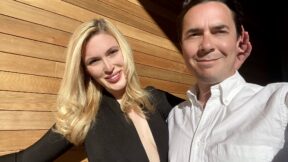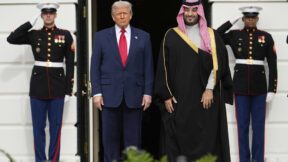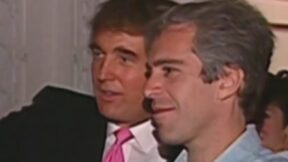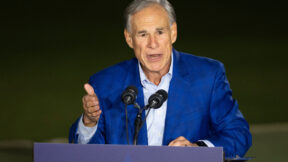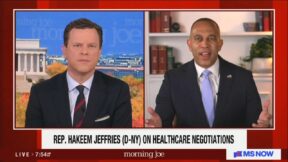Contrary to the Media’s Narrative, California’s Virus Story Should Make Us Rethink Extreme Lockdowns

Robyn Beck/Getty Images
In a media environment where narratives rule the day more authoritatively than even Gov. Gavin Newsom currently controls California, there may be none more ingrained than how and why his state, six weeks after locking down, has been hit far less hard than anyone, especially him, expected. It is virtually an uncontested article of faith, especially among the news media, that the explanation for this is both simple and airtight: California has escaped disaster because they shut down fast and hard.
On the surface, this reasoning makes sense and is certainly appealing, especially to liberals who now seemingly favor the warm embrace of governmental control over their lives far more than they do basic civil liberties. However, this assessment is also based on some critical presumptions which appear to be no longer supported by the facts and logic.
In reality, I believe that a reassessment of California’s situation, based on what we now know, not only creates an entirely different scenario, but should make us all greatly question the very nature of the national lockdown. Specifically, it appears that the central premise of the panic on which nearly all the decisions across the country was based, that everyone was eventually vulnerable to being just like the New York City area, was fundamentally flawed.
The primary basis for the theory of California being a coronavirus “success” story is that the state shutdown occurred “early.” Technically, this is accurate in that Newsom abruptly ended life as we know it here on the evening of March 19. Indeed, this was a couple of days before most other large states followed this dramatic lead.
One of the reasons that I questioned this premise at the time was that it was based in the very odd assumption that California was not the first state in our nation to have been significantly impacted by the virus. It did not require a fancy medical degree to understand that California, with an large amount of regular immigration from China, if only due to basic geography and demographics, would be hit very early, rather than late, in this excruciating process.
While I am not a strong believer in anecdotal accounts, especially in global situations like this one, a number of credible people in my orbit said they were positive they already had this virus over the winter, and interestingly, they all had interaction with people directly from China. That evidence was unconvincing, at least until several data points all indicated that — surprise — the virus was indeed here long before the panic began in mid-March.
Since then, we have learned:
- The first confirmed virus death in the United States was indeed, contrary to previous reports, in California. And it happened on February 6.
- Two antibody tests from respected sources, in both the San Francisco and Los Angeles areas, both concluded that many Californians already had the virus well before the lockdown.
- 60 Minutes did an extensive feature on how a company started tracking flights from Wuhan, China to the United States (mostly to San Francisco and Los Angeles) in late December, as the global threat of the virus began to grow.
- Multiple studies have indicated that the virus has various strains in different parts of the world, and that the one which is dominating the New York City area is functionally different from the one which is seen here on the West Coast, thus providing another logical explanation (in addition to geography, weather, and lack of popular public transportation), for why California has been largely spared.
So, now that we have this information which not available at the time of the shutdown, in a rational world, we should be reevaluating what we now know happened. We should also be coming to different conclusions about why what has happened to date here in California is far from calamitous.
Think about what life was like in California during the two critical months from mid-January to mid-March, and ask yourself whether elements of the conventional wisdom about the virus still make any sense whatsoever, at least on the West Coast. During this critical time period, California was the location for:
- Disneyland, which was open at full capacity with larger than normal crowds because of the new Star Wars attraction (my family went twice during this period, once in late January and again in late February, and while we strolled around mask-free, we were struck at the time by all the people of apparent Chinese descent wearing masks).
- Numerous NBA and NHL games, the Grammy awards, and the Oscars.
- The San Francisco 49ers hosting the NFC Championship game on January 19 and tens of thousands of Super Bowl parties throughout the state when they made the Super Bowl on February 2.
- From January 26 through February 24, the city of Los Angeles was the location of very large and intimate gatherings for memorials to mourn the sudden death of NBA legend Kobe Bryant.
- The Los Angeles City Marathon, which was held on March 8.
But despite these very substantial occasions, all of which would be considered “super-spreader” situations, and would be totally unthinkable to conduct or allow today, there was no explosion in California’s PRE-shutdown virus data in March, when statistics began to be collected in a comprehensive fashion, and when such activities, based on what we have been widely told, should have started showing up in our hospitals in a huge way. Since then, the state’s biggest problem in “flattening the curve” is that our original “curve” was so shallow that there is literally very little room for it to bend down (with 2,253 deaths out of about 40 million residents, that means only one in every 17,750 people, a huge portion of which were already in nursing homes, have died of the virus in California over the past three months).
None of this is intended to suggest that the virus is remotely a “hoax,” or not a very serious matter, or that mitigation efforts didn’t at least help keep the death rate down to some unknowable degree. My argument is that instead of California shutting down “early” and being saved by extreme and sometimes nonsensical mitigation efforts, what REALLY happened here was that California actually shut down “late” and was never, for reasons which may not yet be fully understood, going to have a catastrophic situation like the greater New York City area has suffered.
Such an alteration of the state’s narrative (which will never happen because everyone with any real power here, including the news media, is totally invested in the current fairytale) would go a long way in radically adjusting the path forward for the vast majority of the nation, especially when it comes to outside gatherings during the day. But that would mean making decisions based far more on facts and reason, rather than panic and politics.
John Ziegler is a senior columnist for Mediaite. He hosts a weekly podcast focusing on news media issues and is documentary filmmaker. You can follow him on Twitter at @ZigManFreud or email him at johnz@mediaite.com
This is an opinion piece. The views expressed in this article are those of just the author.
